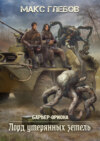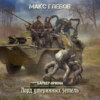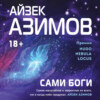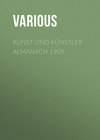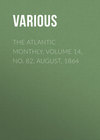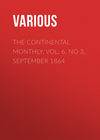Buch lesen: «Blackwood's Edinburgh Magazine, No. 401, March 1849»
SCIENTIFIC AND PRACTICAL AGRICULTURE. 1
There are three reasons why the second edition of a good book, upon an advancing branch of knowledge, should be better than the first. The author, however conversant he may have been with the subject when he wrote his book, is always more thoroughly read in it – supposing him a worthy instructor of the public – his opinions more carefully digested, and more fully matured, when a second edition is called for. Then he has had time to reconsider, and, if necessary, remodel his plan – adding here, retrenching there – introducing new subject-matter in one place, and leaving out, in another, topics which he had previously treated of with more or less detail. And, lastly, the knowledge itself has advanced. New ideas, which in the interval have established themselves, find a necessary place in the new issue; facts and hypotheses which have been proved unsound drop naturally out of his pages; and, on the whole, the later work exhibits a nearer approach to that truthful summit, on which the eyes of all the advancers of knowledge are supposed evermore to rest.
For all these reasons, the second edition of the Book of the Farm is better than the first. The opinions of the author have been reconsidered and materially improved – especially in reference to scientific points; the arrangement has been simplified, and the whole book condensed, by the exclusion of those descriptions of machinery which properly belong to the department of agricultural mechanics, and which we believe are about to be published as a separate work; and the strides which practical agriculture has taken during the last ten years, and the topics which have chiefly arrested attention, are considered with the aid of the better lights we now possess.
Of all the arts of life, there is none which draws its knowledge from so great a variety of fountains as practical agriculture. Every branch of human knowledge is mutually connected – we may say interwoven with – and throws light upon, or is enlightened by, every other. But none of those which largely contribute to the maintenance of social life, and conduce to the power and stability of states, is so varied in its demands upon the results of intellectual inquiry, as husbandry, – or rural economy in its largest sense.
Look at that magnificent ship, which cleaves the waters, now trusting to her canvass and wafted by favouring breezes; now, despite the fiercest gales, paddling her triumphant way over hill and valley, precipice and ravine, which the raging sea, out of her fertile materials, is every moment fashioning beneath her feet. Is there any product of human art in which more intellect is embodied than in this piece of living mechanism? The timber can tell of the axe of the woodman on far-distant hills, and of the toils of many craftsmen in fitting it for its present purpose. The iron of the researches of the mineralogist, the laborious skill of the miner, the alchemy of the smelter, the wonders of the tilt-hammer, the ingenuity of the mechanist, and the almost inconceivable and mathematical nicety by which its various portions are fitted to each other, and, like the muscles and sinews of the human body, made to play together for a purpose previously contemplated – an uninstructed man might almost say, previously agreed upon among themselves. The steam, of what hidden secrets of nature! – the mysteries of heat, which could not hide themselves from the searching genius of Black, – the chemistry of water, which the ever-pondering mind of Watt compelled from unwilling nature, – the endless contrivances by which its fierce power was tamed to most submissive obedience in the workshops of Soho. The compass may for a moment carry us back to the fabled mountains of our infancy, in which the hidden loadstone attracted the fated vessel to its ruin; but it brings us forward again to the truer marvels of modern magnetism, and to the intellect which has been expended in keeping the needle true to the pole-star in the iron boat, where, surrounded by metallic influences, countless attractions are incessantly soliciting it to deviate. And when, as the mid-day sun mounts to the zenith, the sextant and the quicksilver appear, how does it flash upon us that modern navigation is the child of astronomy; and that the mind embodied in the latest Rossian telescope is part and parcel of the inappreciable mass of thought to which, "walking the waters as a thing of life," that huge steam-frigate owes its being!
What a concentration of varied knowledge is seen in this single work of art! From how many sources has this knowledge come! – how many diverse pursuits or sciences have yielded their necessary quota to the common stock! – how many varied talents have been put under contribution to contrive its many parts, and put them fittingly together!
But, to the pursuits of the humble farmer, more aids still contribute than to those of the dauntless navigator. His patient and quiet life on land is as dependent upon varied knowledge, draws its instruction from as many sources, and is more bound up in visible union with all the branches of human science, than even the active and stirring life of the dweller on the sea.
Some of our journal writers are accustomed to ridicule the results of agricultural skill; to undervalue our successful field improvements; to laugh at Smithfield Christmas cattle, and at the exhibitions of our great annual shows. In thoughtlessness, often in ignorance, they write, and always for a temporary effect, which our progressing agriculture can well afford to pass by.
But we ask our rural reader to turn up the first volume of the Book of the Farm, and to cast his eye for a moment on the triad of beautiful shorthorns represented in the sixth plate; or on the magnificent stallion of the fourth plate, or on the graceful sheep of the seventh. We pass over the points in which, to the educated eye, their beauty consists; we dismiss, for the present, all consideration of their perfection as well-bred animals, and their fitness for the special purposes for which they have been reared. We wish him to tell us, if he can, how much mind has gone to the breeding, rearing, and feeding of these animals – how many varied branches of knowledge have lent their aid to this apparently simple and un-imposing result.
The food on which they have been brought up has been gathered from the soil – the grass, the hay, the root crops, the linseed, the barley, the oats. And how much intellect, from the earliest dawn of civilisation, has been lavished upon the soil! – how many branches of knowledge are at this moment uniting their strength to develop its latent capabilities! Geology yields the raw materials upon which, in after ages, the toils of the husbandman are expended. She explains what are the variations in the natural quality of these materials; how such variations have arisen; where they lead to increased, and where to diminished fertility; how and where the still living rocks may contribute to the improvement of the dead earth which has been formed from them; and how, in some apparently insecure regions, the unsleeping volcano showers over the land, at varying periods, the elements of an endless fertility. Mineralogy lends her aid to unravel the origin, and nature, and wants, and capabilities of the soil; and, as the handmaid and willing follower of geology, dresses and classes the fragments which geology has let fall from her magnificent formations. But chemistry, especially, exhausts herself in the cause of the husbandman. No branch of rural art, as we shall see, is beyond her province and control. All that the soil originally derives from geologic and mineral materials, chemistry investigates; all that these substances naturally become, all that they ought to yield, how they may be persuaded to yield it; by what changes this is to be brought about; by means of what agencies, and how applied, such changes are to be induced: – chemistry busies herself with all this, and labours in some sense to complete, for the purposes of rural art, the information which geology and mineralogy had begun.
Upon the soil the plant grows. What a wonder and a mystery is the plant! A living, and growing, and breathing existence, that speaks silently to the eye, and to the sense of touch, and to the sense of smell – speaks kindly to man, and soothingly, and appeals to his reasoning powers – but is mute to the most open and wakeful of all his senses, and by no verbal speech reveals the secrets with which its full vessels are bursting. How many wise heads have watched, and tended, and studied it – the humble plant – interpreting its smallest movements, the meaning of every change of hue upon its leaves and flowers, and gathering profoundest wisdom from its fixed and voiceless life! To what new sciences has this study led the way! Botany never wearies in gathering and classifying; and of modern giants, Linnæus, and Jussieu, and Decandolle, and Brown, and Lindley, and Hooker, and Schleiden, have given their best years to unfold and perfect it. Alongside of descriptive and systematic botany has sprung up the allied branch of Structural Physiology, and the use of the microscope has added to this the younger sister Histology; while these two together, calling in the aid of chemistry, have built up the further departments of Chemical Physiology and Chemical Histology – departments too numerous, too profound in their research, and too special in their several niceties of observation, for one head clearly to comprehend and limit them.
And on the plant as it grows, and as a perfect whole, chemistry expends entire and most gifted intellectual lives. Of what the plant consists, whence it draws its subsistence, how it takes it in – in what form, in what quantity, at what period of the day – how the air feeds it, how the soil sustains it, why it grows well here and badly there – what are the nature, composition, action, and special influences of manures – where and when, and of what kind, they should be applied to the plant – how this or that effect is to be produced by them, and this or that defect remedied.
But the life of the plant is an unravelled thread. The steam-frigate appears to live, and thunders as she moves, breathing fire and smoke. But the still life of the plant awes and subdues more than all this. Man may forcibly obstruct the path of the growing twig, but it turns quietly aside and moves patiently on. The dead iron and wood, and the forceful steam, all obey man's will – his intellect overmasters their stubbornness, and tames them into crouching slaves – but the life of the plant defies him. That life he can extinguish; but to use the living plant he must obey it, and study its wants and tendencies. How vastly easier to achieve a boastful triumph over the most stubborn mineral matter, than to mould to man's will the humblest flower that grows!
And each new plant brings with it new conditions of life, new wants, new virtues, new uses, new whims, if we may so speak, to be humoured. The iron, and the timber, and the brass are always one and the same to the mechanist; but with the constitution of each new plant, and its habits, a new series of difficulties opens up to the cultivator, which only time and experience, and much study, can overcome.
But mechanics also exert much influence upon the culture of the soil, and the rearing of useful plants. And though the greatest achievements of mechanical skill were not first made on her behalf, yet even the steam-engine may be said to have become auxiliary to agriculture; and the thousand ingenious implements which Northampton and York exhibited at their recent anniversaries, showed in how many quarters, and to how large an extent, the purely mechanical and constructive arts are expending their strength in promoting her cause.
On meteorology, which studies the aërial meteors – registers, tabulates, and gives even a local habitation and a form to winds, hurricanes, and typhoons – the progress of the navigator much depends. They hinder or hasten his progress; but he overcomes them at last. But atmospheric changes are vital things to the plant and to the soil. Where no rain falls, the plant withers and dies. If too much falls, it becomes sickly, and fails to yield a profitable crop. If it falls too frequently, though not in too large quantity on the whole, one plant luxuriates and rejoices in the genial season, while another with difficulty produces a half return. If it falls at unseasonable times, the seed is denied admission into the ground in spring, or the harvest refuses to ripen in the autumn.
So the warmth and the sunshine, and the evening dews and the fogs, and the electric condition of the air – its transparency and its varying weight – and prevailing winds and hoar-frosts, and blights and hail-storms, and the influence of the heavenly bodies on all these conditions – with all these things the interests of the plant and the soil demand that scientific agriculture should occupy herself. On every single branch of knowledge to which we have alluded, the power and skill profitably to influence the plant are dependent.
And for what purpose does the plant spring up, the soil feed and nourish it, and the blessed sun mature its seeds? To adorn, no doubt, the surface of the beautiful earth, and to keep alive and propagate its species; but principally to nourish the animal races which supply food and yield their service to man. And, upon the study of this nurture and feeding of the animal races, how much intellect has been expended! Has the stoker who heaps coals upon the engine fire, and turns one tap occasionally to maintain the water-level in the boiler, or another to give passage to the steam – and thus keeps the pile-driver, or the coal-drawer, or the tin mine, or the locomotive, or the steam-boat, or the colossal pumps of the Haarlem lake, in easy and continuous operation – has he, or has the man who curiously watches his operations – have either of them any idea of the long days of intellectual toil – of the sleepless nights, during which invention was on the rack – of the mental dejection and throes of suffering, under which new thoughts were born – of the lives of martyred devotion which have been sacrificed, while, or in order that the machine, which is so obediently simple and easily managed, was or might be brought to its present perfection? Yet all this has been, and has been suffered by men now gone, though the ignorance of the humble workman, little more thoughtful than the iron he works with, fails either to feel or to understand it.
And so too often it is with you who feed, and with you who look at the simple process of feeding stock. As the turnip and the barley, and the oats and the linseed, and the beans, are placed before the almost perfect short-horn, or the graceful Ayrshire, or the untamed West Highlander, or the stately stallion, or the well-bred Leicester or Cheviot ram, or the cushioned and padded Berkshire porker – how little do you know or think of the science, and long skill, and intellectual labour, which have been expended in preparing what is to you so simple! It is not without and beyond the ranks of the agricultural community only that we need look for those who lessen the intellectual character of rural industry, and of the rural life. Too many of our practical men, even of high pretensions, are themselves only the stokers of the agricultural machine; and, like ungrateful and degenerate children, in their ignorance deny the head of the mother that bred and fed them.2
What are the functions of the animals you rear – what the composition of their several parts – what the nature of the food they require – what the purposes it serves – what the proportions in which this or that kind of food ought to be given – what the changes, in the kind and proportion, to adapt it to the special habits and constitution of the animal, and the purposes for which it is fed? Are these questions deep? Yet they have all been thought over and long considered, and discussed and disputed about, and volumes have been written upon them; and the chemist, and the physiologist, and the anatomist have, unknown to you, all laboured zealously and without wearying, in your service. And what you now find so simple only proves how much their sciences have done for you. They have fitted the machinery together, you but throw in the fuel and keep up the steam.
With the rearing of stock, and the improving of breeds, practical men are, or fancy themselves, all more or less conversant. How much warm and persevering genius, guided by purely scientific principles, has been expended upon our improved shorthorns and Leicesters! Are the whole lives of a Collins, or a Bakewell, or a Bates, nothing to have been devoted to pursuits like this? That these were practical men, and not scientific, and that what they have done is not a debt due by agriculture to science, is the saying of many. Men who have never read a book can do, by imitation, what the patient services and skill of other men discovered, and perfected, and simplified. But in this they are only stokers. The improvers were sound and cautious experimental physiologists, guided by the most fixed and certain principles of animal physiology; and it is the results at which these men arrived that have become the household words of the stokers of our day, who call them practice in opposition to science. If science could forget her high duties to the Deity, and to the human race, she might leave you and your art to your own devices.
Need we allude to the conditions of animal life – in a state of health, and in a state of disease; to the varied constitutions of different races and varieties; to the several adaptations of food, warmth, and shelter which these demand; and to the extensive course of study which is now required to furnish the necessary resources to the accomplished veterinary surgeon? Yet would any breeder be safe for a moment to invest his money in stock, in a country and climate like ours, had he not, either in books, or in his own head, or in that of a neighbouring veterinarian, the results at which the long study of these branches of knowledge, in connexion with animal health, had discovered and established?
We pursue this topic no further at present. We fearlessly assert – we believe that we have shown – that as much intellect has been scientifically expended in elucidating and perfecting the various operations of rural life, by which those magnificent cattle have been produced by art, as has gone to the elaboration of that wonderful wave-subduing ship. The vulgar mind, awed by bulk and sound, and visible emblems of thought, may dissent – may say that we have not so much to show for it. But the laws of life are sought for and studied – they are not made by science. The Deity has forbidden human skill to develop a sheep into an elephant. Living materials, as we have said, are not plastic like wood and iron; and to change the constitution and character of a breed of animals may require as great and as long-continued an exercise of inventive thought as to perfect an imposing piece of machinery. The real worth of a scientific result is the amount of mind expended in arriving at it, as the real height of an animal in the scale of organisation is measured by the proportionate size of its brain.
But we have our more palpable and sense-satisfying triumphs too. Look at that wide valley, with its snow-clad summits at a distance on either hand, and its glassy river flowing, cribbed and confined, in the lowest bottom. Smiling fields, and well-trimmed hedge-rows, and sheltering plantations, and comfortable dwellings, and a busy population, and abundant cattle, cover its undulating slopes. For miles industrious plenty spreads over a country which the river formerly usurped, and the lake covered, and the rush tufted over, and bog and mossy heath and perennial fogs and drizzling rains rendered inhospitable and chill. But mechanics has chained the river, and drained the lakes, and bogs, and clayey bottoms; and giving thus scope to the application of all the varied practical rules to which science has led, the natural climate has been subdued, disease extirpated, and rich and fertile and happy homes scattered over the ancient waste.
Turn to another country, and a river flows deeply through an arid and desolate plain. Mechanics lifts its waters from their depths, and from a thousand artificial channels directs them over the parched surface. It is as if an enchanter's wand had been stretched over it – the green herbage and the waving corn, companied by all the industries of rural life, spring up as they advance.
Another country, and a green oasis presents itself, busy with life, in the midst of a desert and sandy plain. Do natural springs here gush up, as in the ancient oasis of the Libyan wilderness? It is another of the triumphs of human industry, guided by human thought. Geology, and her sister sciences, are here the pioneers of rural life and fixed habitations. The seat of hidden waters at vast depths was discovered by her. Under her directions mechanics has bored to their sources, and their gushing abundance now spreads fertility around.
Such are more sensible and larger triumphs of progressing rural economy – such as man may well boast of, not only in themselves, but in their consequences; and they may take their place with the gigantic vessel of war, as magnificent results of intellectual effort.
But it is after these first ruder though more imposing conquests over nature have been made, that the demand for mind, for applied science, becomes more frequent, and the results of its application less perceptible. And it is because, in ordinary husbandry, we have not always before us the striking illustrations which arrest the vulgar eye, that prevailing ignorance persists in denying its obligations to scientific research.
The waters which descend from a chain of hills become a striking feature in the geography of a country, when they happen to unite together into a large and magnificent river: they escape unseen and unnoticed if, keeping apart, they flow in countless tiny streamlets to the sea. Yet, thus disunited, they may carry fertility over a whole region, like the Nile when it overflows its banks, or as the river of Damascus straying among its many gardens; while the waters of the great river may only refresh and fertilise its own narrow margins, as the Murray and the Darling do in South Australia, or the deep-bedded rivers of Southern Africa.
Thus much we have devoted to the introductory portion of the Book of the Farm. Those of our readers who wish to follow up farther these scientific views may study Johnston's Lectures, and Elements, of Agricultural Chemistry and Geology: and by the way we would commend, for applied science, these works of Johnston's, and for practical knowledge, the book of Stephens, to the special attention of our emigrating fellow-countrymen, of whom so many in their foreign homes are likely to regret the overflowing sources of information on every conceivable topic with which their home literature and home neighbours supplied them.
Let us now take a look at the body of Mr Stephens' work. These are the days of pictorial embellishment – of speaking directly, and plainly, and palpably to the eye. We have accidentally opened the book at the 217th page. What letterpress description could – so briefly we do not say, for that is out of the question – but so graphically and fully, explain the practice of eating off turnips with sheep, and all its appliances of hurdles and nets, and turnip shears, and feeding troughs, and hay racks, as the single woodcut which this page exhibits? And so the practice of bratting and of stelling sheep is illustrated, and all the forms and fashions of stells in high and low countries (pp. 231 to 236;) the pulling, dressing, and storing of turnips, (190 to 195;) the various modes of ploughing, with their ups and downs, and turnings, and crossings, and gatherings, and feerings, and gore furrows, and mould furrows, and broad furrows, and cross furrows, and samcastings, and gaws, and ribs, and rafters, and slices, and crowns, and centres, and a host of other operations and things familiar to the farmer, but the very names and designations of which are Greek to the common English reader. All these the woodcuts explain beautifully and familiarly to the uninitiated readers, and most usefully to the incipient farmer. How is the rural economy of Great Britain and Ireland, in its best forms, stored up, not only for modern and immediate use, but for the understanding of future ages, by these illustrations! We would specify, in addition to those already referred to, the steam-boiling apparatus in page 320; and the taking down of a stack of corn in page 401; and the feeding of the threshing machine in page 406; and the hand-sowing of corn in page 553; and the pickling of wheat, (chaulage of our Gallic neighbours,) page 536; and the measuring of the grain in the barn, &c., page 419; and the full sacks, as they should be, in the barn, in page 423. To the foreigner, how do these pictures speak of English customs, costumes, and usages; to our Trans-atlantic brethren, of the source of those modes and manners which have at once placed them on an elevation in agricultural art, to which 800 years of intellectual struggle had barely sufficed to lift up their fathers and cousins at home; and to the still British colonial emigrant the precise practices, and latest rural improvements, which it will be his interest, at once, and his pride, to introduce into his adopted land!
How would the Scriptores Rei Rusticæ have gained in usefulness in their own time, how immensely in interest in ours, had they been accompanied by such illustrations as these! The clearness of Columella would have been made more transparent, the obscurity of Palladius lessened; and Cato and Varro would have preserved to us the actual living forms, and costumes, and instruments of the ancient Etruscan times, more clearly than the painted tombs are now revealing to the antiquarian the fashions of their feasts, and games, and funereal rites. We have before us the singularly, richly, and extravagantly, yet graphically and most instructively illustrated book of Georgius Agricola, De Re Metallica (Basil, 1621.) The woodcuts of the Book of the Farm have induced us to turn it up, and it is with ever new admiration that we turn over its old leaves. It has to us the interest of a child's picture-book; and though, as a chef-d'œuvre of illustrative art, the three hundred woodcuts of Stephens do not approach the book of Agricola, yet what a treasure would the work of Ausonius Popma on the rural implements of the ancients – their instrumenta in its widest sense – have been to us, could it have been illustrated when he wrote (1690) in the style of Agricola, and with the minuteness and fulness of Stephens!
The same desire to render minutely intelligible the whole subject treated of, which these woodcuts show, is manifested in the more solid letterpress of the book. It was said of Columella, by Matthew Gessner, that he discoursed "non ut argumentum simplex quod discere amat, dicendo obscuret, sed ut clarissimâ luce perfundat omnia." Such, the reader feels, must have been the aim of the author of this book. In his descriptions, nothing appears to be omitted; nothing is too minute to be passed over. His book exposes not merely the every-day life, but the very inmost life – the habits, and usages, and instruments of the most humble as well as the most important of the operations of the domestic, equally with the field economy of rural life. We do not know if its effects upon our town population will ever be such as Beza ascribes to that of Columella —
Tu vero, Juni, silvestria rura canendo,
Post te ipsas urbes in tua rura trahis;
but certainly, with a few more woodcuts, it would, in minute and graphic illustration, by prints and letterpress be a most worthy companion to the work of Agricola.
The plan of the book is to give a history of the agricultural year, after the manner of the Roman Palladius and our own old Tucker; and the present volume embraces the operations of the skilful farmer in every kind of husbandry during the winter and spring. But, before we come to the heart of the book, hear what Mr Stephens says about the agricultural learning of our landed gentry: —
"Even though he devote himself to the profession of arms or the law, and thereby confer distinction on himself, if he prefer either to the neglect of agriculture he is rendering himself unfit to undertake the duties of a landlord. To become a soldier or a lawyer, he willingly undergoes initiatory drillings and examinations; but to acquire the duties of a landlord before he becomes one, he considers it quite unnecessary to undergo initiatory tuition. These, he conceives, can be learned at any time, and seems to forget that the conducting of a landed estate is a profession, as difficult of thorough attainment as ordinary soldiership or legal lore. The army is an excellent school for confirming, in the young, principles of honour and habits of discipline; and the bar for giving a clear insight into the principles upon which the rights of property are based, and of the relation betwixt landlord and tenant; but a knowledge of practical agriculture is a weightier matter than either for a landlord, and should not be neglected.
"One evil arising from studying those exciting professions before agriculture is, that, however short may have been the time in acquiring them, it is sufficiently long to create a distaste to learn agriculture afterwards practically – for such a task can only be undertaken, after the turn of life, by enthusiastic minds. But as farming is necessarily the profession of the landowner, it should be learned, theoretically and practically, before his education is finished. If he so incline, he can afterwards enter the army or go to the bar, and the exercise of those professions will not efface the knowledge of agriculture previously acquired. This is the proper course, in my opinion, for every young man destined to become a landowner to pursue, and who is desirous of finding employment as long as he has not to exercise the functions of a landlord. Were this course invariably pursued, the numerous engaging ties of a country life would tend in many to extinguish the kindling desire for any other profession. Such a result would be most advantageous for the country; for only consider the effects of the course pursued at present by landowners. It strikes every one as an incongruity for a country gentleman to be unacquainted with country affairs. Is it not strange that he should require inducements to learn his hereditary profession, – to become familiar with the only business which can enable him to enhance the value of his estate, and increase his income? Does it not infer infatuation to neglect becoming well acquainted with the condition of his tenants, by whose exertions his income is raised, and by which knowledge he might confer happiness on many families, and in ignorance of which he may entail lasting misery on many more? It is in this way too many country gentlemen neglect their moral obligations.
"It is a manifest inconvenience to country gentlemen, when taking a prominent part in county matters without a competent knowledge of agriculture, to be obliged to apologise for not having sufficiently attended to agricultural affairs. Such an avowal is certainly candid, but is anything but creditable to those who have to make it. When elected members of the legislature, it is deplorable to find so many of them so little acquainted with the questions which bear directly or indirectly on agriculture. On these accounts, the tenantry are left to fight their own battles on public questions. Were landowners practically acquainted with agriculture, such painful avowals would be unnecessary, and a familiar acquaintance with agriculture would enable the man of cultivated mind at once to perceive its practical bearing on most public questions."
And what he says respectively of the ignorant and skilful factor or agent is quite as deserving of attention. Not merely whole estates, but in some parts of the island, whole counties lag in arrear through the defective education and knowledge of the agents as a class: —




